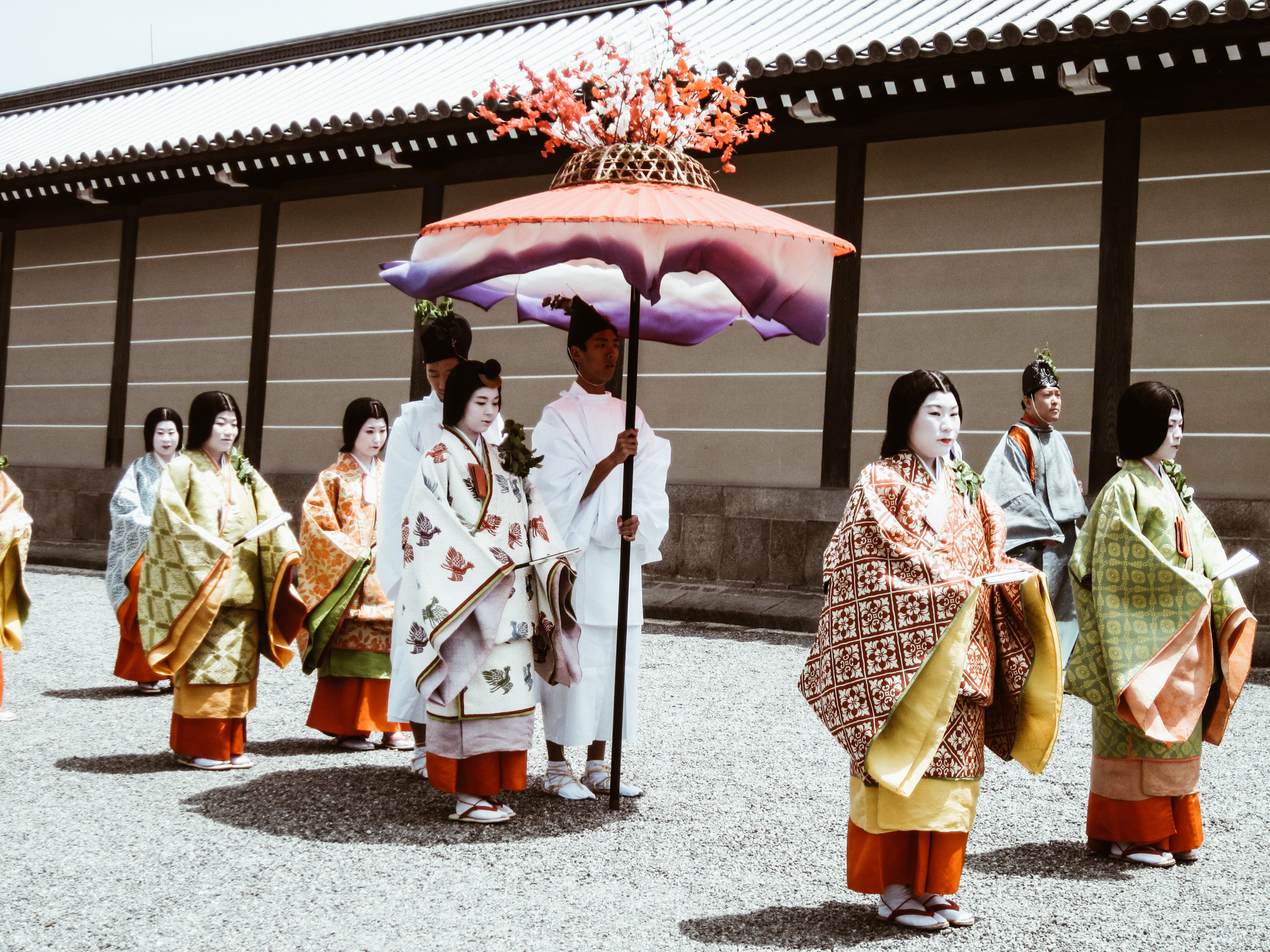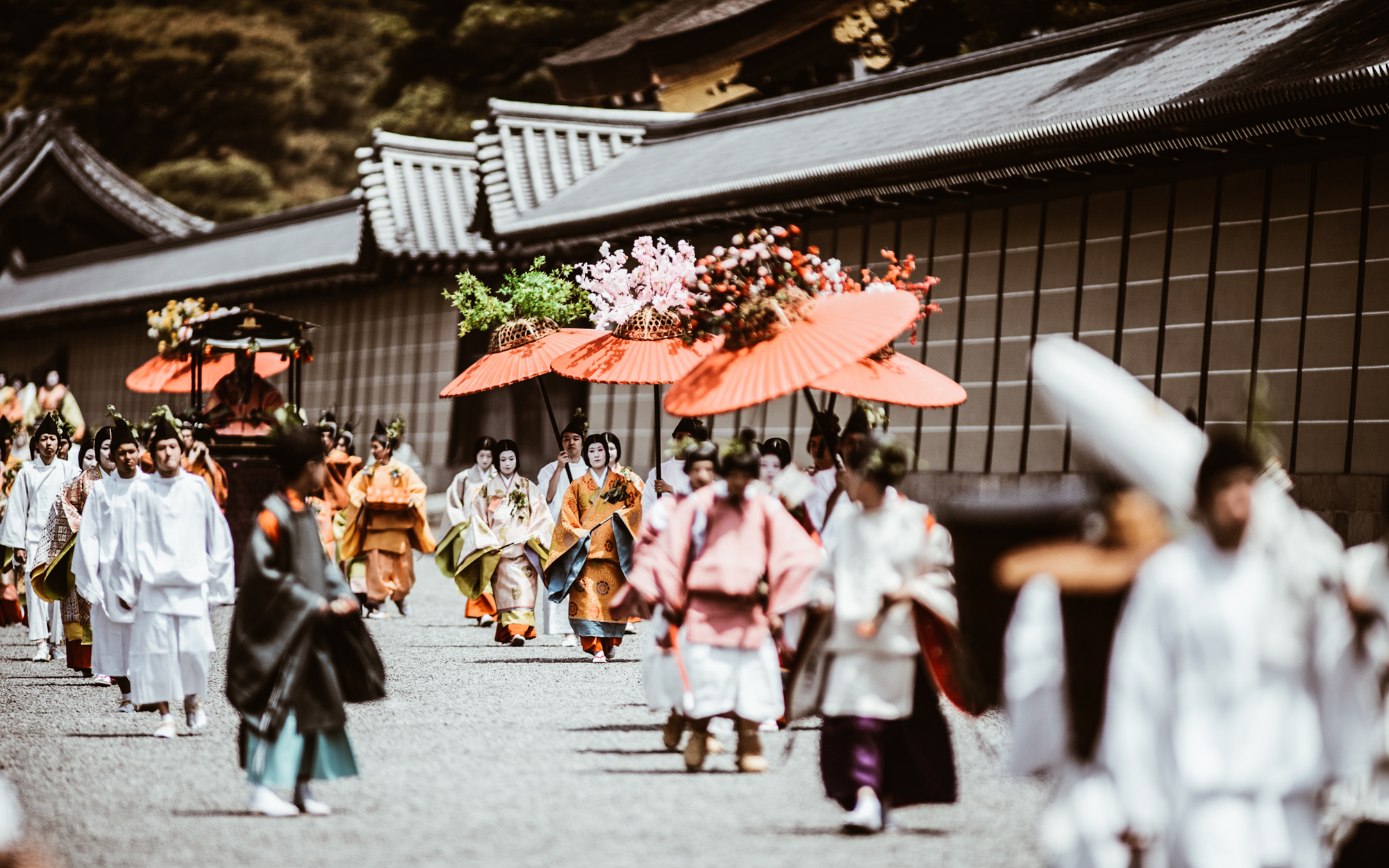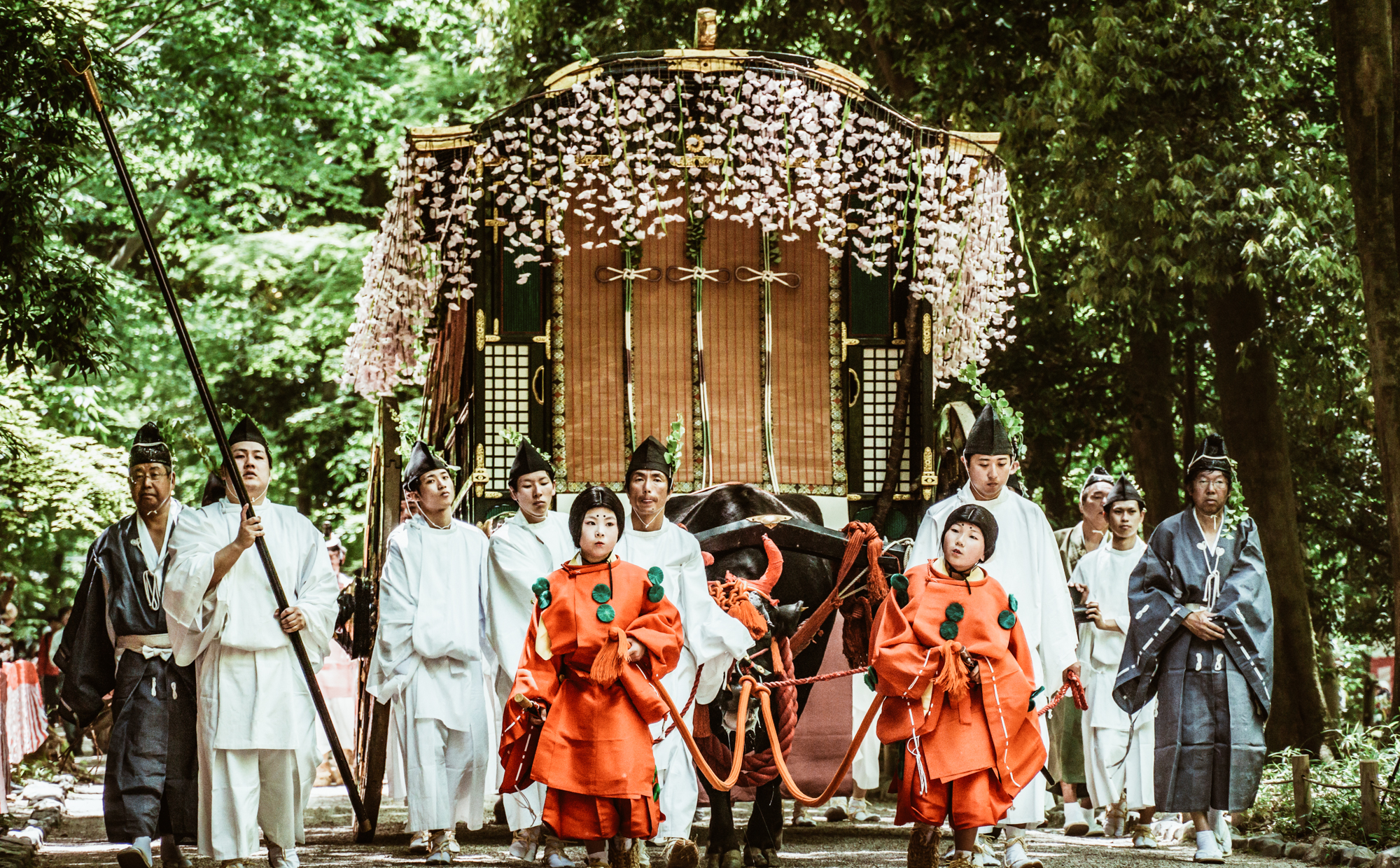Japan Tradition: Aoi Matsuri
The Hollyhock Festival

photo credits: mutabi.wordpress.com
One of Kyoto’s three most well-known festivals, Aoi Matsuri (葵祭) takes place every year on the 15th of May. The name of this festival derives from the hollyhock leaves that participants in the festival’s parade carry with them as they walk down the designated route. In Japanese, “Aoi” (葵) refers to the “alcea rosea” or, as the namesake of this festival, the “hollyhock”. This plant produces brilliant colours and beautiful flowers, and its leaves are believed to have the power to prevent natural disasters.
The main attraction of this festival is a grand parade that involves more than 500 people dressing up in the aristocratic styles of the Heian period (794 – 1185 CE).
This annual parade starts from the Imperial Palace, and the participants will walk down the road until they arrive at Kamo Shrine. This name refers to the shinto sanctuary complex that consists of Kamigamo shrine and Shimogamo shrine.


photo credits: amanohashidate.jp, Nobuhiro Suhara
The Origins
The festival first started during the reign of Emperor Kinmei (539 – 571CE), when a period of heavy rains ruined the harvest and an epidemic spread through the country.
It was believed that these tragedies came about because the Kamo deities wanted to punish the people. Thus, the emperor sent a messenger to the temple with offerings and to perform various rituals in order to appease these deities. Part of these rituals also required the riding of a galloping horse.


photo credit: Alex Hurst, Clement Koh
This became an annual event with the intention of preventing further disasters. However, during the reign of Emperor Monmu (697 – 707CE), it was suspended due to the huge amount of people joining to watch the rituals. In the 19° century, Emperor Kanmu established the seat of the imperial throne in Kyoto and this represented the beginning of the Heian period in Japanese history. The emperor recognised the Kamo deities as protectors of the capital and reestablished the Aoi Matsuri as an annual imperial event. The festival was sometimes discontinued in some periods of Japanese history, especially during World War II, but it was actively resumed in 1953. The Saiō-Dai tradition in this festival was also initiated in 1956.

photo credits: regex.info
The characters of the Festival
There are two main characters in the Aoi Matsuri: the Saiō-Dai and the Imperial Messenger.
The Saiō-Dai is a woman chosen from the sisters and daughters of the emperor to dedicate herself to the Shimogamo Shrine. The role of the Saiō-Dai is to maintain spiritual purity and represent the Emperor at the festival. Today the Saiō-Dai is chosen from all unmarried women of Kyoto. She wears twelve layers of silk robes (jūnihitoe), finely colored in the traditional style of the Heian court. To maintain ritual purity the Saiō-Dai has to go through several ceremonies of purification before the festival’s parade.


photo credit: Hong Seongwan
The Imperial Messenger, on the other hand, conducts the procession of the festival by riding a horse. During the Heian period, he would be a Fifth-Rank courtier holding office of middle or lesser capitan. He was also typically a man destined for high office. His role was to read the imperial edict and present the emperor’s offerings. During the Heian period, the Saiō-Dai and the Imperial Messenger would be accompanied by ten dancers and twelve musicians.

photo credits: Hisanori
Celebrations Today
The parade starts at 10:30 a.m. on May 15th at Kyoto’s Imperial Palace. It then slowly departs for two important stops: the Shimogamo Shrine, where the procession should arrive at 11:15 a.m., and the Kamigamo Shrine, where they will arrive at 3:30 p.m. The Saiō-Dai and the Imperial Messenger perform their rituals at these stops. The Saiō-Dai pays her respects to the deities, while the Imperial Messenger intones the imperial rescript, praising the deities and requesting their continued favor.


photo credits: Slugicide, find-your-jpn.com
Share this:
- Click to share on Facebook (Opens in new window)
- Click to share on Twitter (Opens in new window)
- Click to share on Tumblr (Opens in new window)
- Click to share on Pinterest (Opens in new window)
- Click to share on Telegram (Opens in new window)
- Click to share on WhatsApp (Opens in new window)
- Click to share on Reddit (Opens in new window)
- Click to print (Opens in new window)






